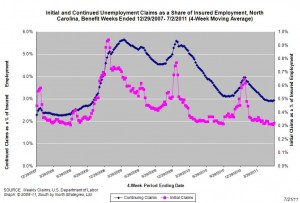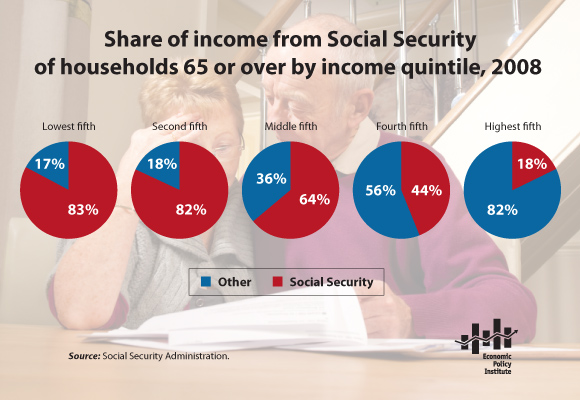Public-Sector Cuts Hobble N.C.’s Labor Market
CHAPEL HILL (July 22, 2011) – In June, employers in North Carolina eliminated 9,500 more payroll positions than they added, according to data released today by the Employment Security Commission. Private-sector job creation ground to a virtual halt, while the public sector shed 10,200 positions. The public-sector losses alone canceled out 42 percent of the private-sector job gains recorded in 2011.
“June was an abysmal month for North Carolina’s labor market,” said John Quinterno, a principal with South by North Strategies, Ltd., a research firm specializing in economic and social policy. “There was little evidence of any sort of recovery, and in several important respects, labor market conditions actually deteriorated.”
Last month, North Carolina employers cut 9,500 more payroll positions than they added. Net losses occurred exclusively in the public sector (-10,200, driven by a -7,600 decline in state government), while the private sector added 700 positions. Most private-sector industries posted little or no job growth in June. The one exception was leisure and hospitality services, which gained 4,400 positions; unfortunately, that gain was more than offset by the loss of 5,400 positions in professional and business services.
Also, a revision to the May data found that the state lost 2,800 more payroll jobs than first reported (-10,200 versus an original estimate of -7,400). With that revision, North Carolina has lost, on net, 301,000 positions, or 7.2 percent of its payroll base, since December 2007.
“Compared to December 2007, North Carolina has fewer payroll jobs in every major industry sector except for educational and health services and leisure and hospitality services,” noted Quinterno. “Even there, the growth has been modest.”
Between June 2010 and June 2011, North Carolina lost, on net, 2,700 jobs (a 0.1 percent decline). All of the growth that occurred in the private sector (+28,300 positions) was more than offset by losses in the public sector (-31,600). In terms of individual private industries, professional and business services grew the most in absolute terms (+12,000), while construction shed the most jobs in absolute and relative terms (-6,800, -3.8 percent). In the public sector, net job loss was driven by declines in state government (-15,500, -7.8 percent).
The household data for June also were alarming. Last month, the total number of employed individuals fell by 9,888 (-0.2 percent), while the number of unemployed individuals rose by 9,516 (+2.2 percent). The size of the workforce was essentially unchanged.
Over the year, the number of unemployed North Carolinians fell by 28,069 (-5.9 percent). Unfortunately, much of this decline was attributable to individuals exiting the labor force. Between June 2010 and June 2011, the size of the labor force contracted by 17,970 individuals (-0.4 percent). Over the year, the unemployment rate fell to 9.9 percent from 10.5 percent.
“North Carolina’s labor market remains down and out,” observed Quinterno. “Two years into a supposed recovery, the share of the adult population with a job actually is lower than was the case in December 2007. In June 2011, only 55.8 percent of working-age North Carolinians had jobs, compared to 62.4 percent in December 2007.”
“The June employment report offers yet more proof that the state’s labor market is not recovering,” added Quinterno. “Since the labor market bottomed out in December 2009, the total number of jobs in the state has increased by just 0.5 percent. Growth actually turned negative in recent months due to layoffs in the public sector. Sadly, nothing in the June jobs report suggests that any improvements are imminent.”
“2011 is shaping up to be yet another lost year for working North Carolinians.”



 Email Sign-Up
Email Sign-Up RSS Feed
RSS Feed